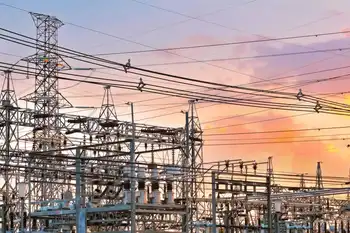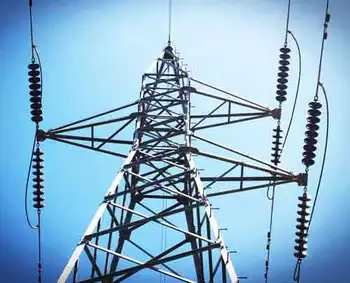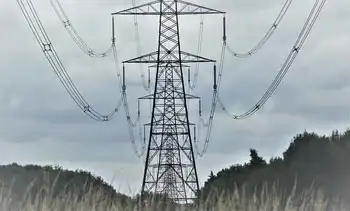TEPCO establishes compensation plan
TOKYO, JAPAN - JapanÂ’s government decided to set up a fund to help pay damages stemming from the crisis at a tsunami-crippled nuclear plant, financed by public money and mandatory contributions from utility companies.
Tokyo Electric Power Co. expects a deluge of damage claims from those affected by the radiation-leaking Fukushima Daiichi nuclear plant on the northeastern coast, whose problems constitute the worst nuclear accident since Chernobyl in 1986.
However, the utility is not expected to be able to pay all of them.
The governmentÂ’s plan, which would spread the burden for the crisis and must be referred to parliament for its expected approval, would create an entity that collects money for compensation from TEPCO and other utilities that operate nuclear power plants.
The government will issue the body special bonds that can be cashed when needed to pay claims.
TEPCO earlier agreed to a cost-cutting reorganization, and also intended to ensure its ability to pay compensation that includes creating a commission to monitor the companyÂ’s management.
Economy and Trade Minister Banri Kaieda insisted that the new fund was not a bailout for TEPCO, but rather a way to ensure victims get paid.
“We want to avoid big changes in the electricity bills and contain the public burden as much as possible,” Kaieda said.
TEPCO President Masataka Shimizu said he expects the plan to go into effect soon.
“Under this support scheme, while receiving support from the government, we will prepare to compensate those who are suffering in a fair and prompt manner,” he said in a statement.
Shinichi Ichikawa, the director of equity research at Credit Suisse in Tokyo, said the plan needed to achieve three goals: maintain a stable electricity supply, ease concerns of financial markets and ensure victims of the nuclear disaster would be compensated.
“It looks like it’s a good solution,” he said.
TEPCO has sought a 2 trillion yen US $24.8 billion loan to get it through the initial emergency period.
It expects to pay 50 billion yen US $620 million in initial compensation to nearly 80,000 residents evacuated from around the radiation-leaking plant, which was hit by a giant tsunami after JapanÂ’s massive March 11 earthquake. Overall damages are expected to be much higher.
The operator of a nuclear plant in central Japan began suspending operations at its reactors while it strengthens tsunami protections, under a separate agreement with the government.
The crisis at Fukushima had prompted the government to evaluate all of JapanÂ’s 54 reactors for quake and tsunami vulnerability.
The March 11 tsunami knocked out electricity and crucial cooling systems at the Fukushima plant.
That assessment led to Prime Minister Naoto Kan to request a temporary shutdown at the Hamaoka plant in Shizuoka prefecture amid concerns an earthquake with a magnitude of 8 or higher could strike central Japan sometime within 30 years.
The Hamaoka facility sits above a major fault line and has long been considered JapanÂ’s riskiest nuclear power plant.
Chubu Electric Power Co., which supplies electricity to central Japan, including the city of Toyota, where the automaker is based, said steps to idle the No. 4 reactor at the Hamaoka plant started.
The company expects to begin halting the No. 5 reactor — its only other operating reactor — soon.
Nuclear energy provides more than one-third of JapanÂ’s electricity and shutting the Hamaoka plant is likely to exacerbate power shortages expected this summer. Its reactors account for more than 10 per cent of ChubuÂ’s power supply.
The government has said it will not seek similar shutdowns of any other reactors in the country.
Chubu Electric will also indefinitely delay a planned resumption of HamaokaÂ’s No. 3 reactor, which was shut down for regular maintenance late last year.
In a serious setback for efforts to stabilize the Fukushima plant, officials said that one of the reactors had been more heavily damaged than previously thought.
The findings likely mean it will take longer than expected to restore the plantÂ’s cooling systems. The original plan promised to bring the plantÂ’s three troubled reactors to a cold shutdown by early next year.
Nuclear officials said that new data showed that the water level in the core of Unit 1 was much lower than expected, fully exposing what was left of the fuel rods that had partially melted in the hours and days immediately following the tsunami.
The findings — which came after workers repaired monitoring equipment— indicate that melted fuel also had fallen to a lump in the bottom of the pressure chamber and may have even slipped into the larger beaker-shaped drywell, or containment vessel.
Nuclear Industrial and Safety Agency spokesman Hidehiko Nishiyama acknowledged for the first time that the condition constituted a “meltdown” under the Japanese definition, which requires melted fuel to drop to the bottom of the core.
“Meltdown” is not a scientific term and the definitions for it vary, though generally a “partial meltdown” refers to the melting of fuel rods — as has been known to have happened at Fukushima for some time — and a “complete meltdown” can mean the pressure vessel and other containments have been breached.
Officials made it clear that the fuel had melted early on the crisis and posed no danger now, as the temperature at the bottom of the reactor was around 100 degrees Celsius.
TEPCO had adopted an unorthodox method of trying to cool Unit 1Â’s reactor by trying to fill the drywell with water leaking from the core. But the new information means that they will have to find a new strategy, said Goshi Hosono, a prime ministerÂ’s aide and director of the nuclear crisis task force.
“We were too optimistic,” he said.
Related News

Ontario prepares to extend disconnect moratoriums for residential electricity customers
TORONTO - The Ontario government is preparing to announce relief for residential electricity users struggling because of the COVID-19 emergency, according to sources.
Sources close to those discussions say a decision has been made to lengthen the existing five-month disconnect moratorium by an additional three months.
News releases about the moratorium extension are currently being drafted and are expected to be released shortly.
Electricity utilities in Ontario are currently prohibited from disconnecting residential customers for non-payment during the winter period from November 15 to April 30.
The province is also looking at providing further relief by adjusting time-of-use prices, which are designed to encourage…



